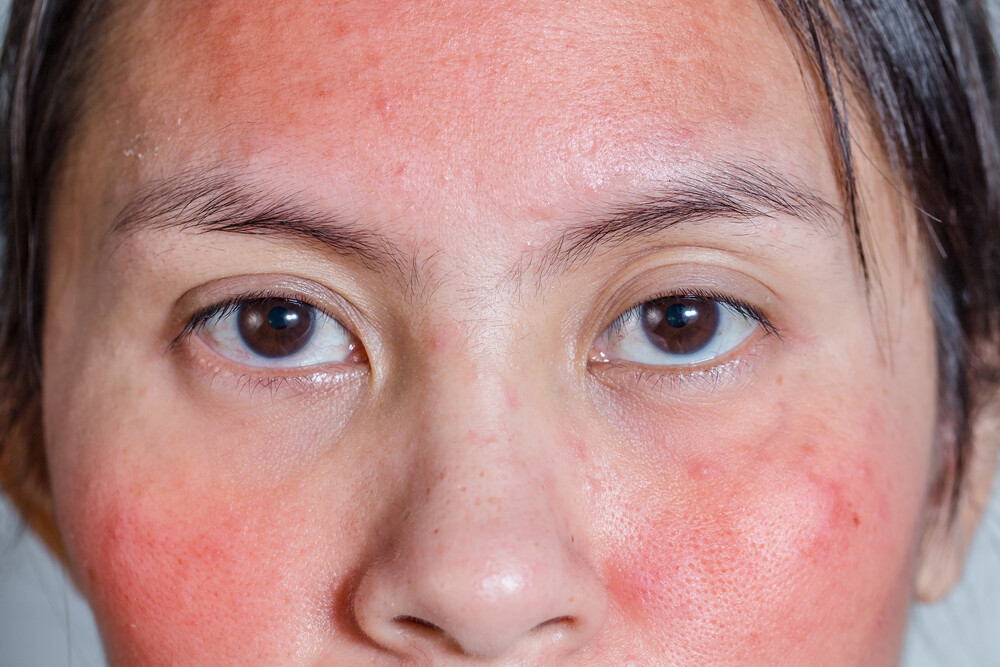Rashes on the face are particularly unpleasant for those affected. How a so-called exanthema can develop and what helps against it, you can find out here.
Rash on the face: Annoying evil
A skin rash (exanthema) is always unpleasant for those affected. Especially annoying is a rash on the face. Whether it is hives, pustules, red spots or blisters – the unattractive changes in the face can hardly be hidden, so that those affected often have the feeling that they are being stared at excessively. Various infections and diseases can be considered as causes for a rash on the face, and the treatment is based on these.
Causes of facial rash
The following diseases are more likely to cause a rash on the face:
- Herpes, especially blisters caused by e.g. herpes of the lips or nose, herpes in the mouth or herpes in the eye
- Ringel rubella, are more likely to occur in children between three and eight and, in addition to typical cold symptoms, cause reddish rashes on the face and body
- Bark lichen (impetigo), also a children’s disease, which leads to fluid-secreting nodules
- Acute contact eczema, e.g. caused by care products or cosmetics, redness and blisters appear, later the skin peels
- Solar eczema (due to a defensive reaction of the body, the sunburn that develops can be much more severe than the previous sun exposure), causes redness, inflammation and blisters
- Pimples / acne, especially in young people
- Rosacea, redness and blisters appear
- Skin cancer, above all the so-called basal cell carcinoma or squamous cell carcinoma, develops e.g. through exposure to the sun and causes reddish spots
- Atopic eczema, occurs in children and causes itchy skin rash. Often in connection with an allergy like asthma or hay fever
- Seborrheic eczema (younger adults), a chronic disease that causes dandruff and sharply defined rashes in the skin folds
- Perioral dermatitis, a reddish rash around the mouth or eyes that often affects young women
When should I go to the doctor with my rash?
Often the rash is only caused by an immediate reaction to a product used, which disappears on its own after a few days when the product in question is no longer used. You should consult your doctor in the following cases:
- The rash comes suddenly and is very strong
- The cause of the complaints is unclear
- Skin rash on the face spreads to other parts of the body
- The rash changes or becomes stronger in intervals
- Additional symptoms such as fever
- the rash causes severe itching, severe pain or swelling
Rashes in children and babies should always be examined by a pediatrician.
What to do in case of skin rash on the face?
The rash is treated depending on the cause. Various drugs are used accordingly: antibiotics, for example, help against skin diseases caused by bacterial infections. Antihistamines are used to treat itching, and cortisone is used for allergy-related reactions and skin diseases such as neurodermatitis.

